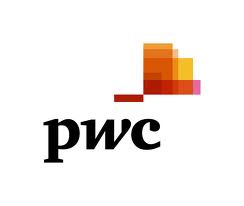Financial Literacy in the Classroom: Staying Ahead of the Curve
By: Shannon Schuyler, PwC Corporate Responsibility Leader
By 2020, Millennials – the 80 million babies born between 1977 and 2001 – will comprise 50% of the global workforce (Source: PwC). In a perfect world, most if not all of these young adults would have a firm grasp on sound financial management: how to use online banking tools to manage their accounts, make (and stay on) a budget, manage credit card debt, pay for a car loan, etc.
But many of today’s youth – the adults of tomorrow who will be driving our economy – know little if anything about these basic financial concepts. Sure, they know what money is and they want a job someday where they make a lot of it, but that’s not enough to make sound financial decisions. We must make these money concepts “sticky” − keeping our ideas simple and concrete, but relevant. Showing – not just telling – how these financial decisions will shape their futures can put Millennials on a path to a place where budgeting, saving and investing are as commonplace as texting or streaming a video.
Recently, there’s been a groundswell of youth education efforts, such as PwC’s Earn Your Future initiative, designed to improve the financial literacy of our nation’s youth. I’ve witnessed firsthand the power of our people interacting with and inspiring children to think about their futures, dream big, and plan for success. I’ve also seen the excitement of educators eager to share with others what has worked for them and to bring tested and proven financial lessons back to their students through the educators' seminars we conduct in partnership with Knowledge@Wharton High School.
While these types of business/educator partnerships can have a significant impact on youth education, we need to constantly think about how to take things to the next level. Creating and delivering lessons that energize, excite and inspire children are essential to knowledge retention. But competing considerations – navigating a complicated political landscape or assuaging cultural sensitivities, for example – in addition to developing a curriculum, securing funding, and finding and allocating skilled resources, can distract us from the most critical element: the children. How do they learn best? How has technology been integrated into the lesson? Are there opportunities for teamwork and self-directed goals and outcomes in the financial literacy curricula? Fortunately, summer offers parents and educators, as well as private sector corporations and nonprofits closing out their fiscal years, a great opportunity to reassess how programs can be tailored for each child.
Most children are hungry and eager to learn about financial concepts. In fact, 86% of teens indicate they would rather learn about money in class before making mistakes in the real world (Source: Charles Schwab 2011 Teens and Money Survey). Students beginning their first jobs want to understand how taxes impact their paychecks, and those planning for their first big purchases want to know how long it will take to save up for them. It’s up to us to provide the tools – the basic building blocks of budgeting, saving, and investing. By equipping our children early on with the proper financial literacy tools and knowledge, they can better manage their resources and sensibly sculpt their own fiscal futures.
Whether developing a single lesson or an entire financial literacy program, it’s hard to overstate how important it is to not lose track of who we’re trying to educate. Factoring in children’s perspectives, experiences, financial goals and aspirations can transform a 30-minute lesson into a life-changing experience. Our challenge goes beyond embracing today’s “best practices.” We need to develop tomorrow’s best practices. Continuing to look at ways to enhance instruction to create programs and experiences that work best for children of all backgrounds and learning styles is the key to making a real difference.
How will you stay ahead of the curve?

